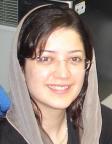Computing Aggregate Quantities in Large-Scale and Dense Sensor Networks
Ref: CISTER-TR-160201 Publication Date: 19, Jan, 2016
Computing Aggregate Quantities in Large-Scale and Dense Sensor Networks
Ref: CISTER-TR-160201 Publication Date: 19, Jan, 2016Abstract:
Although the information technology transformation of the 20th century appeared revolutionary, a bigger change is on the horizon. The term cyber-physical system (CPS)
has come to describe the research and technological efforts that will ultimately allow the
interlinking of the real-world physical objects and the cyber-space efficiently.
Technological advances in hardware design enable the emergence of low-cost single
embedded computer equipped with sensing, processing and communication capabilities.
This makes it economically feasible to densely deploy networks with very large quantities
of such nodes. Accordingly, it is possible to take a very large number of sensor readings
from the physical world, compute quantities and take decisions out of them.
Very dense networks offer a better resolution of the physical world and therefore a
better capability of detecting the occurrence of an event; this is of paramount importance
for a number of foreseeable applications. Environmental monitoring and structural health
monitoring (SHM) are two examples of such applications. In this Thesis, we consider
densely instrumented CPS applications.
Considering the typical limited capabilities of sensor nodes (in terms of communication and processing), computing an estimate of the state of the physical world is challenging. In general, the main challenge of dense sensing networks is categorized into two
distinct classes: data transmission and data aggregation.
Assume a large-scale dense networked sensor system, whose nodes have a common
sensing goal: to measure a physical phenomenon and also to compute different features
from the distribution of sensor readings in order to trigger a set of control commands for
the actuators in a timely manner. Based on the aforementioned challenges, we formulate
the Thesis hypothesis as follows: we believe that it is possible to extract certain features
of a physical phenomenon in a dense sensor network, in a reliable and timely way, and
with a time complexity that is essentially independent of the number of sensor nodes.
Therefore, the primary objective of this Thesis is to devise technologies and methodologies that enable extracting certain features of a physical phenomenon monitored by
a dense sensing network in a timely and reliable manner. To reach this primary objective, a set of scientific and technical objectives have been identified. The first objective
is to devise an error recovery scheme for the slotted WiDOM protocol in a noisy wireless channel. This scheme should enable reliable data transmission in harsh environments
where sensor nodes are more prone to interference. The second objective is to devise
an aggregation mechanism that captures the dynamics of the physical quantities and self
adapts according to the physical changes. This mechanism allows obtaining an accurate
interpolation for a dynamic physical quantity. The third objective is to devise algorithms
to identify various features in a distribution of a physical phenomenon. Feature extraction algorithms enable identifying the location and the boundaries of events in dense sensing
applications.
Document:
PhD Thesis, Faculdade de Engenharia da Universidade do Porto.
Porto, Portugal.
Record Date: 1, Feb, 2016









 Maryam Vahabi
Maryam Vahabi View
View Download
Download